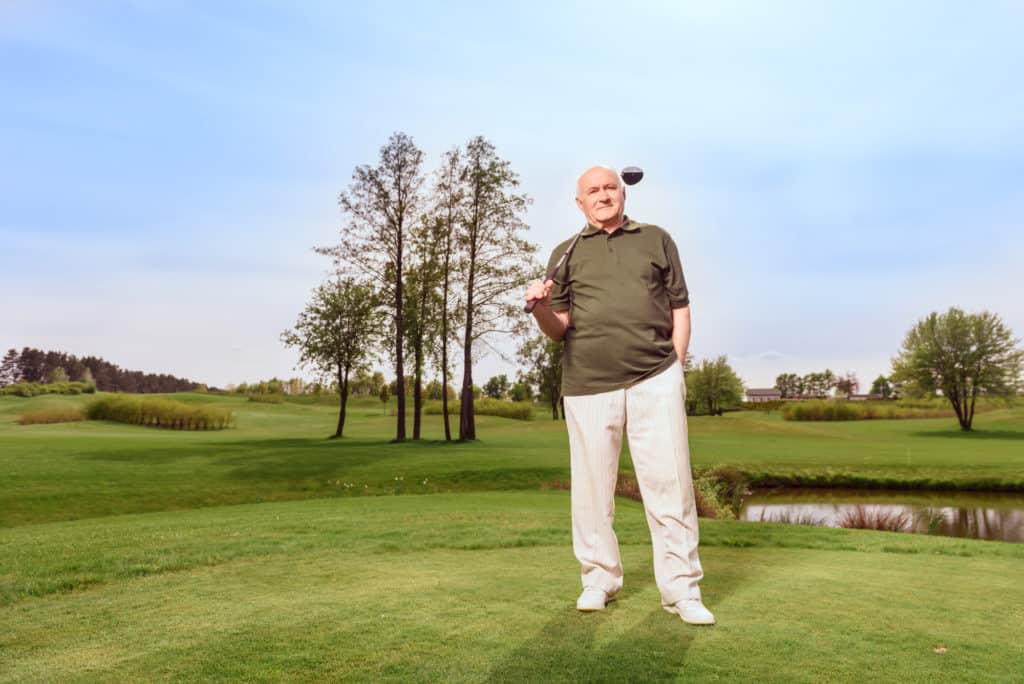
Senior golfers need to accept that there are going to be some changes in their game.
Swing speed will slow down, the distance will decrease, and balance can sometimes get complicated.
The good news is that there are ways you can work on your game to improve and thrive as a senior golfer.
Here are our top twenty golf tips for seniors to improve your game.
20 Golf Tips for Seniors to Improve Your Game

1. Take Less of a Back Swing

It’s essential to take less of a backswing for most golfers, but it is even more critical for seniors.
Taking a very long backswing can cause a player to lose their balance, and it can create a decrease in distance.
Golfers will sometimes lose control and get the club off the plane as well.
When senior golfers start losing distance, they sometimes try and take the club back further, but this is not the way to get more distance.
2. Don’t Forget the Follow-Through
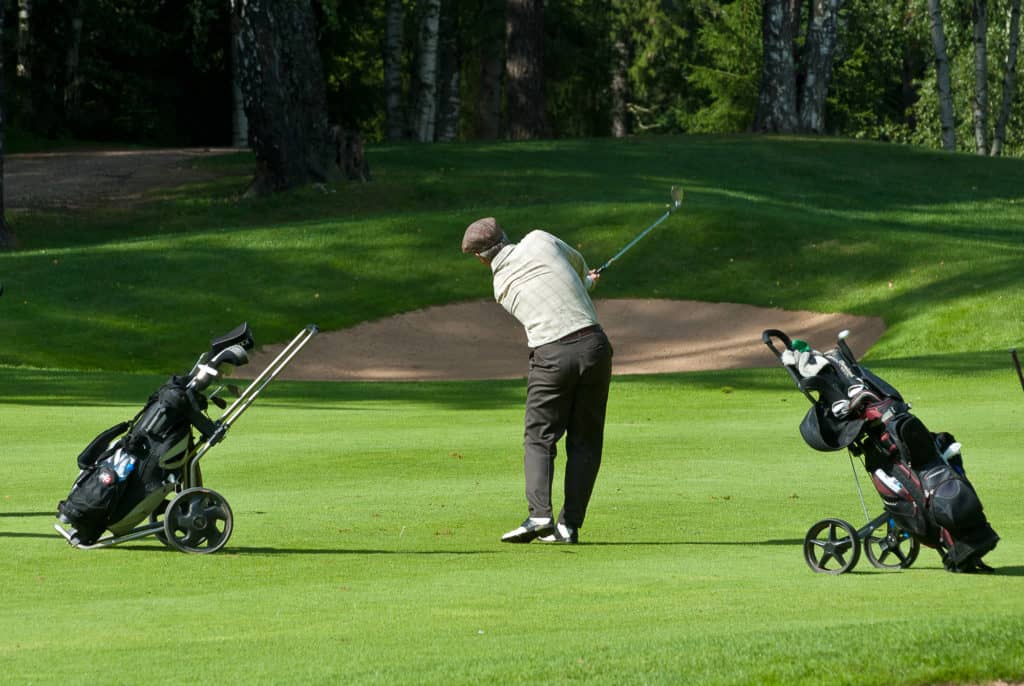
As a golfer ages, the follow-through becomes more critical.
Follow-through is what completes the golf swing.
The golfer who forgets the follow-through is most likely stopping their entire swing a bit short.
This will likely start before the impact position and cause some issues with the control of your shots.
Always accelerate through your shots and complete the finish.
If you decelerate in any way, you may end up hitting the shot fat.
3. Check Your Grip Size
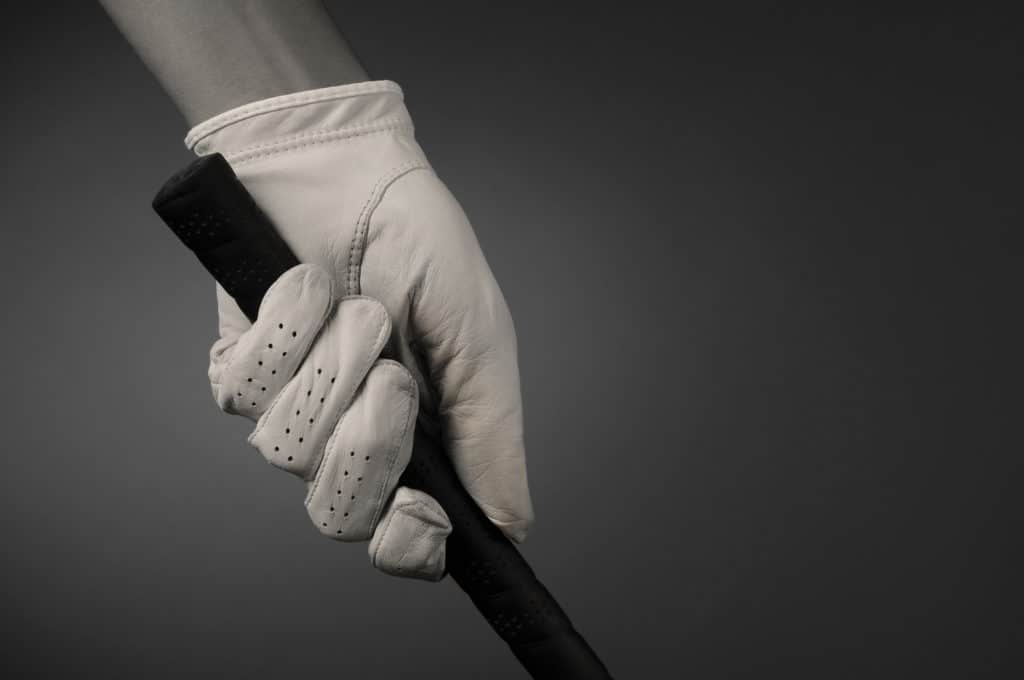
If you are a senior golfer who struggles with arthritis in any way, you may want to check your grip size.
Midsize or jumbo golf grips can make things much easier on your hands.
You will not have to close your fingers as tightly, and it may cause less pain and discomfort.
Changing grips is not nearly as expensive as changing out all of your equipment.
It can be a great solution to make the game more enjoyable.
4. Make Sure the Shaft Is Right

Senior golfers should be using senior golf shafts.
If you are hitting your seven iron less than 135 yards, then it is time for senior golf shafts.
The shafts are going to be graphite, and they will be much lighter than a standard regular golf shaft.
The senior shafts will help golfers with slower swing speeds get some of the distance back in their game.
5. Set Composition—Hybrids

The set makeup for a senior golfer is very important.
Playing with long irons is a terrible idea.
It takes lots of swing speed to hit a long iron solidly, so you will want to have several hybrids in your bag.
Senior golfers should have a mix of high-lofted fairway woods as well as hybrids.
In addition to the long clubs, it’s also essential to have several wedges.
Carrying just a pitching wedge is not enough for a senior golfer.
6. More Weight Transfer
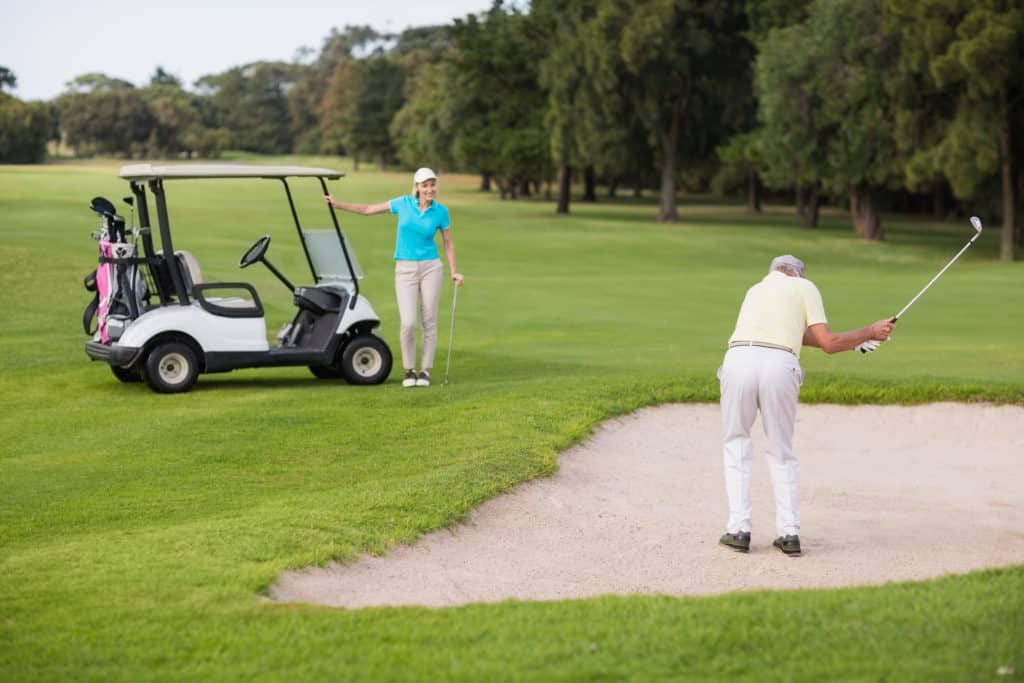
One way to get senior golfers some extra distance is to increase the weight transfer.
Transferring weight to your right foot and then back to your left foot is very important.
The better you get at making this weight transfer efficient, the better the moment of inertia and extra hit you get off the tee.
Make sure you are not moving your entire body around.
You will just want to transfer weight efficiently and with a compact turn.
7. Chipping vs. Pitching
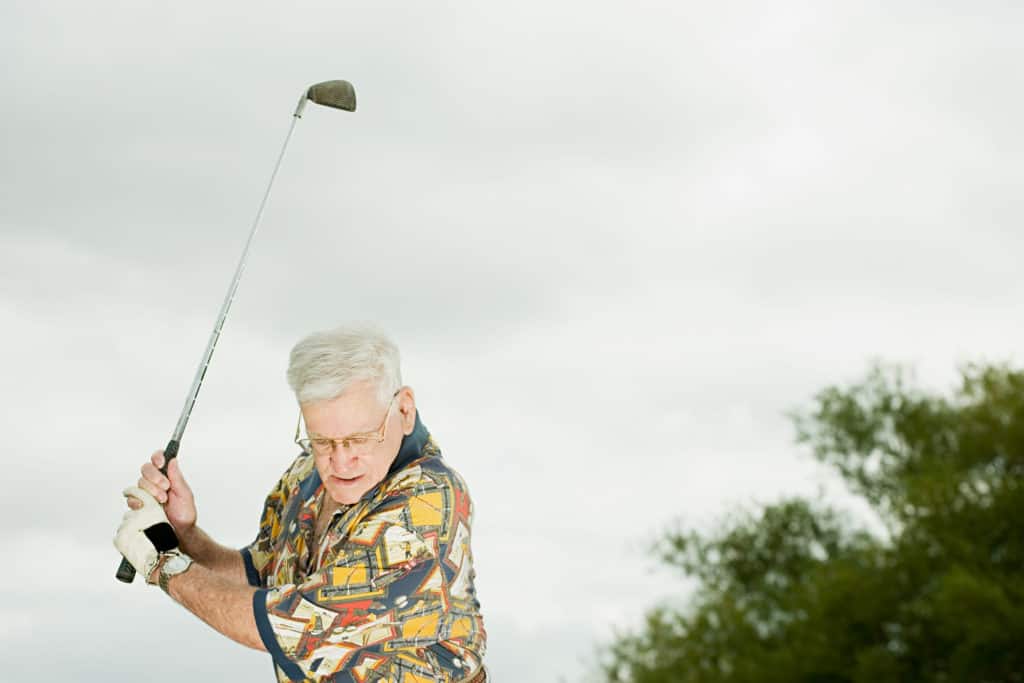
Chip shots are those that stay closer to the ground and roll a good portion of the way to the hole.
Pitch shots fly in the air a long way and then roll just a few feet.
The chip shot is the better choice for the senior golfer.
Chip shots require a simpler motion, and they will keep the ball closer to the ground.
The senior golfer who wants to keep things simpler in their golf game should consider chipping as opposed to pitching.
8. Lob Wedge for Bunker Shots
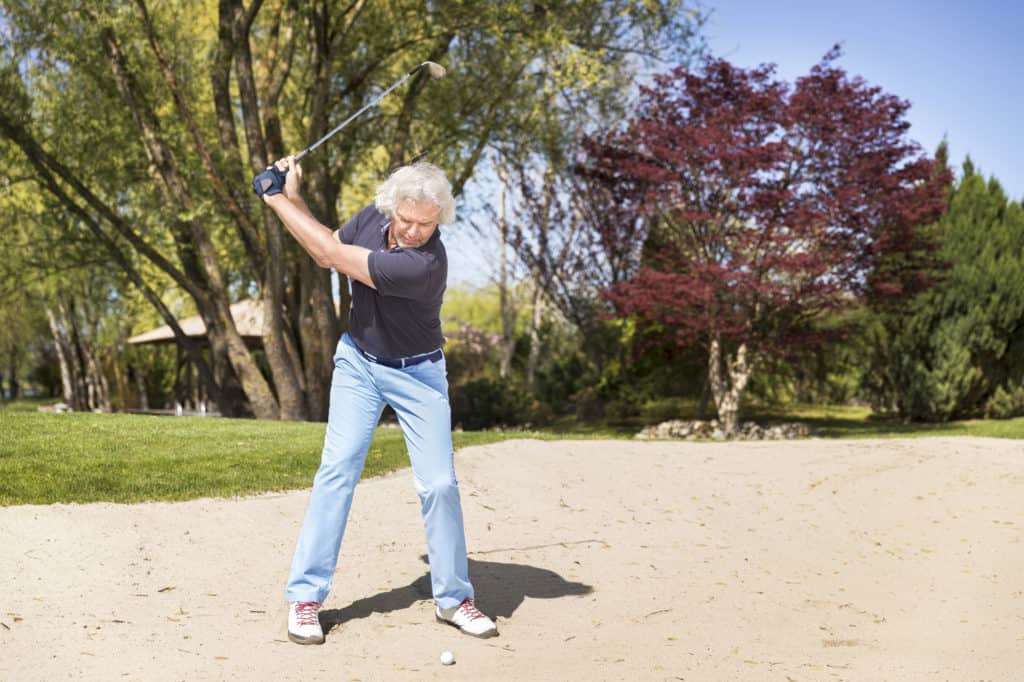
A sand wedge is the traditional go-to golf club out of the bunker.
This does not mean the only club you should use out of the bunker is the sand wedge.
The lob wedge shots take a smaller swing, and you can get the ball to stop a bit more easily.
The lob wedge shots spin more as well.
If you ever have trouble getting out of a bunker, now that your swing speed has started to slow, it may make sense to use the lob wedge.
9. Proper Putter Length
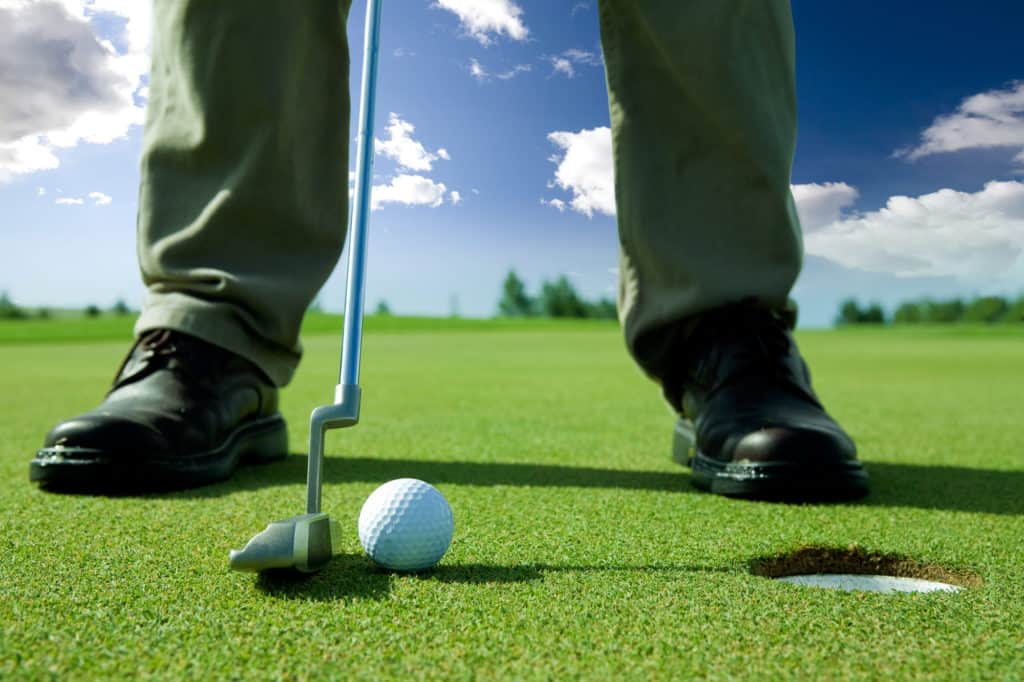
Putting as a senior golfer becomes very important.
This is the one area of the game where you will easily be able to compete with golfers of any level.
There is no reason a senior golfer cannot be as good at putting as a thirty-year-old scratch handicap player.
In addition to spending more time practicing putting, it is a good idea to make sure your putter is appropriately fitted.
An adequately fitted putter is probably going to be shorter than the putter you have in your bag currently.
Most golfers are playing with a putter which is too long for them.
Luckily, having your putter fitted to the proper length is going to be a simple fix, and it will help with both distance control and alignment.
Getting a putter that is the right length allows a senior to get their eyes over the ball.
10. Practice Walking—Stay Active

Playing golf is an excellent way for a senior golfer to stay active.
Seniors who are concerned about keeping their scores low should try and stay in good physical shape.
There are lots of ways to accomplish this, but one of them is walking.
When you play golf (even using a golf cart), you will end up taking a lot of steps.
If you are practicing walking and spending time staying active, you will find you have much more energy as you get closer to the eighteenth hole.
One great way for seniors to stay in shape is to walk nine holes and ride the other nine.
If walking eighteen is too much, that is entirely understandable.
However, walking nine and riding nine is an excellent solution many people don’t think about.
11. Course Management—Being Smart With Choices

Part of being a senior golfer is accepting you are a senior golfer.
If you keep trying to carry the ball over a two-hundred-yard water hazard, you will continue to struggle.
Stop trying to hit your seven iron 150 yards if it only goes 135 yards.
It takes time to learn your new yardages and adjust your game, but it is a necessary step.
Refusing to admit your golf game has changed will only make it harder for you to adjust, and it will most likely increase your handicap.
Think about playing the course differently.
Hit a driver and then two seven irons and make one putt.
Don’t try and hit a driver and then hit a three-wood into trouble and cause yourself more issues.
12. Turn Left Foot Out
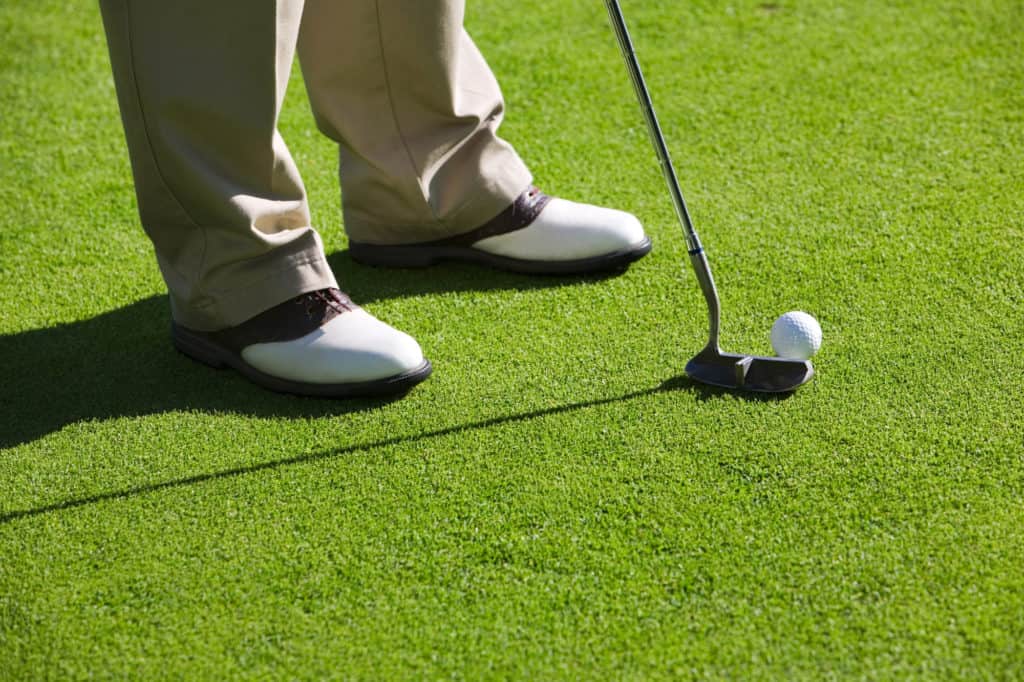
Another issue that starts to happen for seniors is the ability to complete a turn.
If your body is not capable of turning correctly, you will not only lose distance but some accuracy as well.
Part of this issue with turning comes from a golfer not being as flexible as they once were.
If you want to gain back a bit of your flexibility, one simple fix is to turn your left foot out just a little bit.
When you turn the left foot out, you can help release your body and turn through towards your target.
Sometimes with this left foot staying square, you may feel as though you are a bit stuck when you swing through.
The squared left foot could also cause some extra pressure on a golfer’s knees.
Anything that could potentially cause an injury should undoubtedly be avoided.
These simple little tweaks to the golf setup and stance can make all the difference when it comes to your golf career as a senior.
13. Play from the Proper Tees

One of the biggest questions for senior golfers is when it is time to move up to the senior tees.
There is no set rule in place as to when moving up a set of tees is necessary, but it is usually around the age of seventy.
If this comes earlier or later for a golfer, that is completely fine.
Playing golf from the senior tees is not at all cheating.
This is what makes the game fair for players of all ages.
As soon as you switch to the senior shafts and you start to see distances decreasing, it is time to move up a set of tees.
When you move up, your handicap will also be more accurate.
Anytime you play from a set of tees that is not a good fit for you, your handicap will be affected.
14. Use Subtraction for Layups
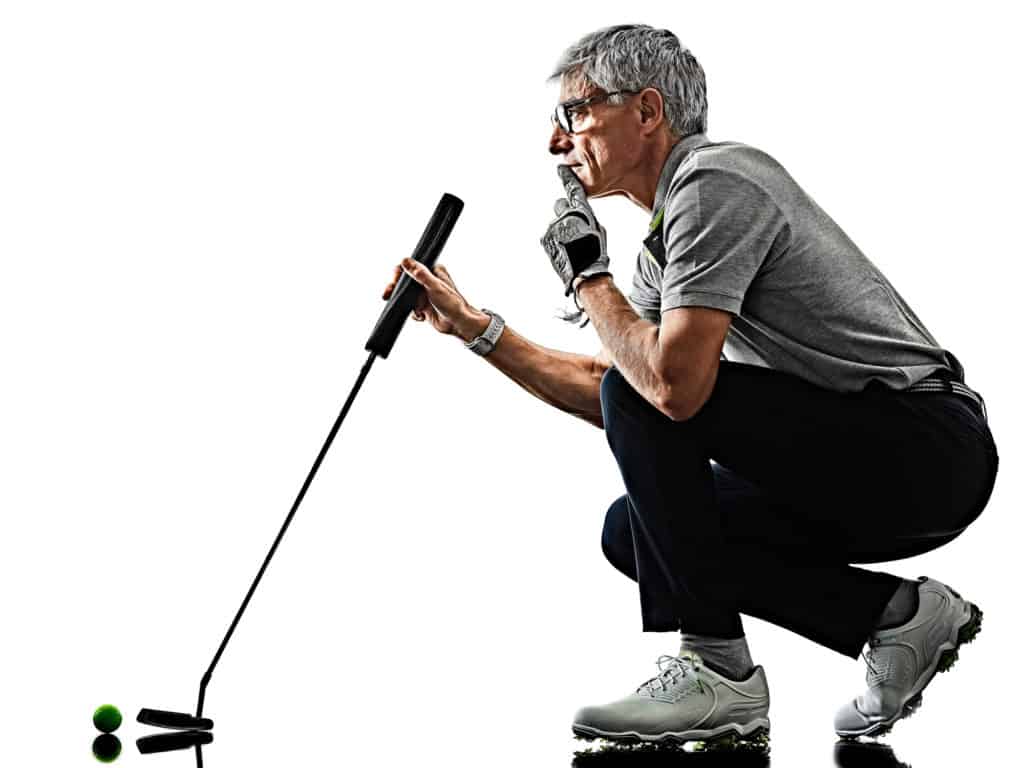
When you are playing a longer par five or a par four, you need to be very careful about your layup shot.
If you are further from the hole than you need to be to put the ball on the green, you don’t need to hit a three wood.
Find a wedge shot you are comfortable with—it can be 50, 60, 70 yards.
Now, instead of playing your second shot to the hole, play it to one of those yardages you are comfortable with.
When you do this, you will notice you have more confidence with your approach to the green, and you will probably hit the ball closer to the hole.
When you leave yourself at yardage like forty yards or thirty yards where you don’t have a go-to club, you can end up seeing poor third shots.
This is where double bogeys come from.
On the long holes, play it to make a bogey and move on.
15. Focus on Tempo

The tempo is essential for all golfers, but it is even more critical for the senior golfer.
If your tempo is not precisely as it should be, then you will struggle to make a solid connection with the ball.
Since you are probably already starting to struggle with a lack of speed, a poor tempo could make the game quite ugly.
Be sure your tempo is consistent by thinking about keeping things consistent.
Think about making sure you stay balanced.
Think about a slow takeaway and a full finish.
These are all things that are going to help you produce a much better shot, even with a slower swing speed.
16. Athletic Setup

Since balance can be an issue for senior golfers, it is vital to make sure your setup is good to begin with.
Having your feet in the right place and making sure your weight is evenly distributed is extremely important.
Golf is a sport, and if you are not set up like an athlete to hit a great shot, you won’t hit one.
Senior golfers can get a medicine ball and practice their swing, stance, and set up without even having a club in their hands.
This athletic setup with knees slightly bent and chin up and not down will make all the difference in your golf swing.
17. Keep a True and Honest Handicap
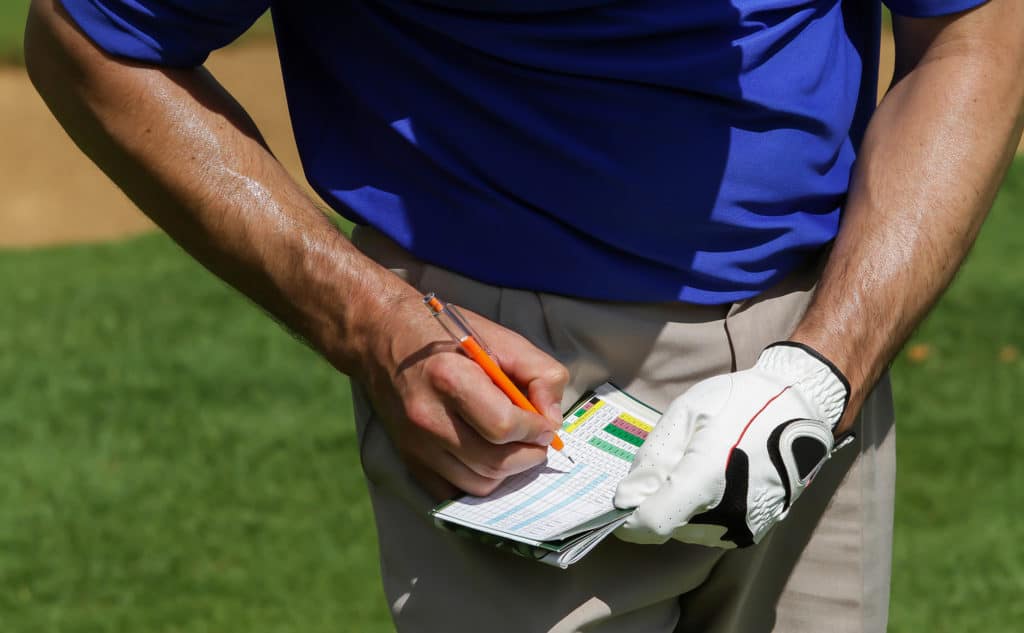
This is a tip that does not only apply to senior golfers; it applies to all golfers.
The only correct way to know if you are getting better or worse at the game of golf is if you keep an honest score.
If you flub a chip shot, count it.
If you hit your first drive out of bounds, count it.
If you don’t count these, you will shoot a terrible 98 one day and an incredible 96 the next, but the scores won’t give you the real story.
If you keep an honest score, your handicap will be fair when you play matches against your friends as well.
If you want to be able to win, you need to be able to play to your handicap.
If you aren’t counting those two-foot putts you miss, your handicap will be inaccurate.
Although high golf scores are ugly, they can tell you a lot about your game and what you need to work on to improve.
Be honest on the golf course, and only good things will happen for your golf game.
18. Don’t Forget the Mental Game

If you have not noticed, the recent trends in golf instruction and training focus on the mental game.
The mental game of golf is critical, but for some reason, the seniors are often ignored when it comes to the mental game.
Senior golfers should be visualizing shots, they should be thinking positive swing thoughts, and they should have a plan in place for the golf course.
You need a strategy to attack the golf course as a senior player.
You should think about the course before you play and choose where you want to land each shot.
Making these decisions is going to help you prepare and play golf at a much higher level.
If you stand on a tee box that has water in front of it and you say, “Don’t hit it in the water,” this is a terrible mental concept.
You should be thinking about hitting a great shot that flies over the water hazard and rolls towards the target.
Forget the water could even come into play.
19. Stretch Before Each Round

Since we talked about how seniors can end up losing some of their mobility, it is a good idea to work on stretching to combat this issue.
Running up to the first tee box, grabbing your driver, and taking a massive swing will likely not lead to a great shot.
If you want to work on improving your flexibility and mobility, you need to arrive to play before your round starts and get some stretching in.
Make sure to stretch your back, your legs, your shoulders, and your hips if possible.
The golfers who are serious about their health and long-term physical fitness will also stretch after their round.
Truly, this is the best procedure for long-term health and strength.
20. Practice at Home
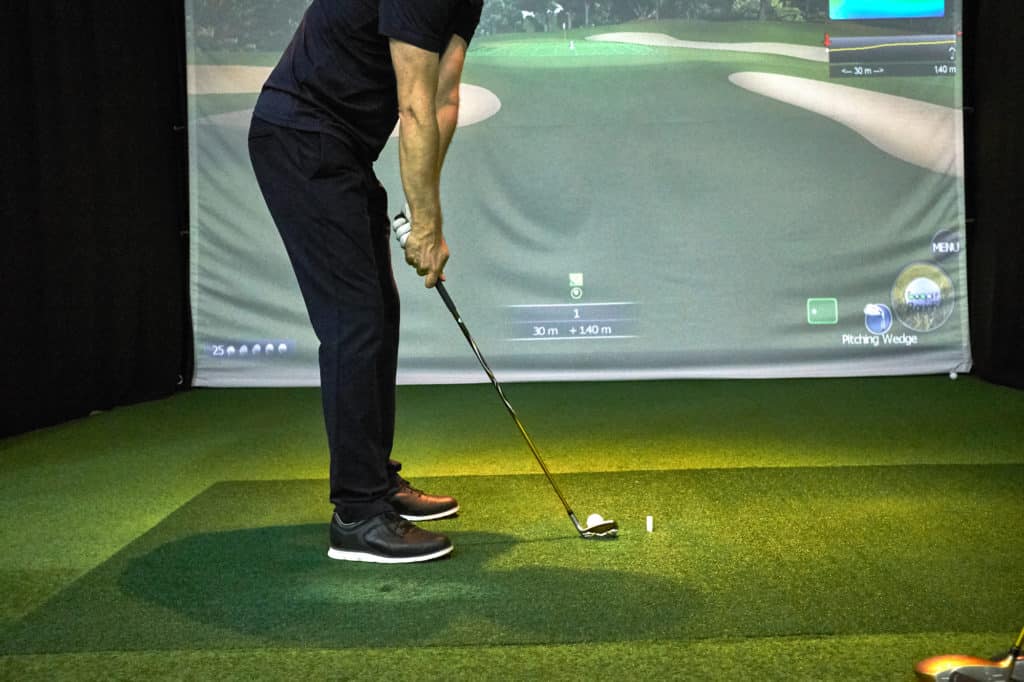
Last on our list is a concept that may seem simple, but not enough golfers are taking advantage of it.
Many people think you need to go to the golf course to practice your golf game.
This is just not true.
Practicing at home is entirely acceptable, and almost everyone has the setup to do it.
You can choose between putting inside, setting up a net in your yard, or hitting foam ball chip shots in your living room.
There are so many ways to practice from the comfort of your own home.
If you think that hitting ball after ball on the driving range is the only way to get better, you are wrong.
There is so much you can do from home to help you become a better player.
Hopefully, our list of the top 20 golf tips for seniors has helped you figure out the best ways to improve your golf game.



Leave a Reply